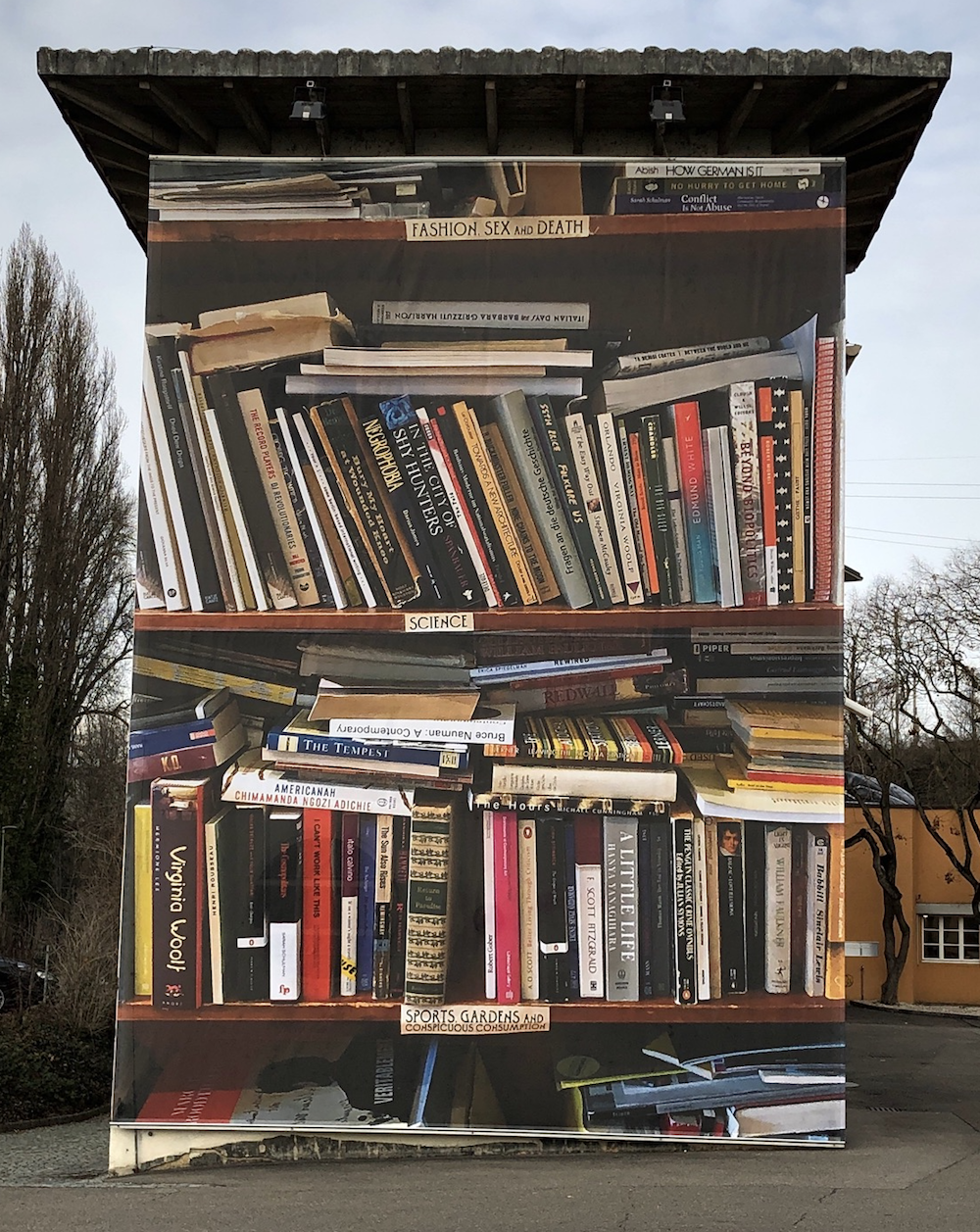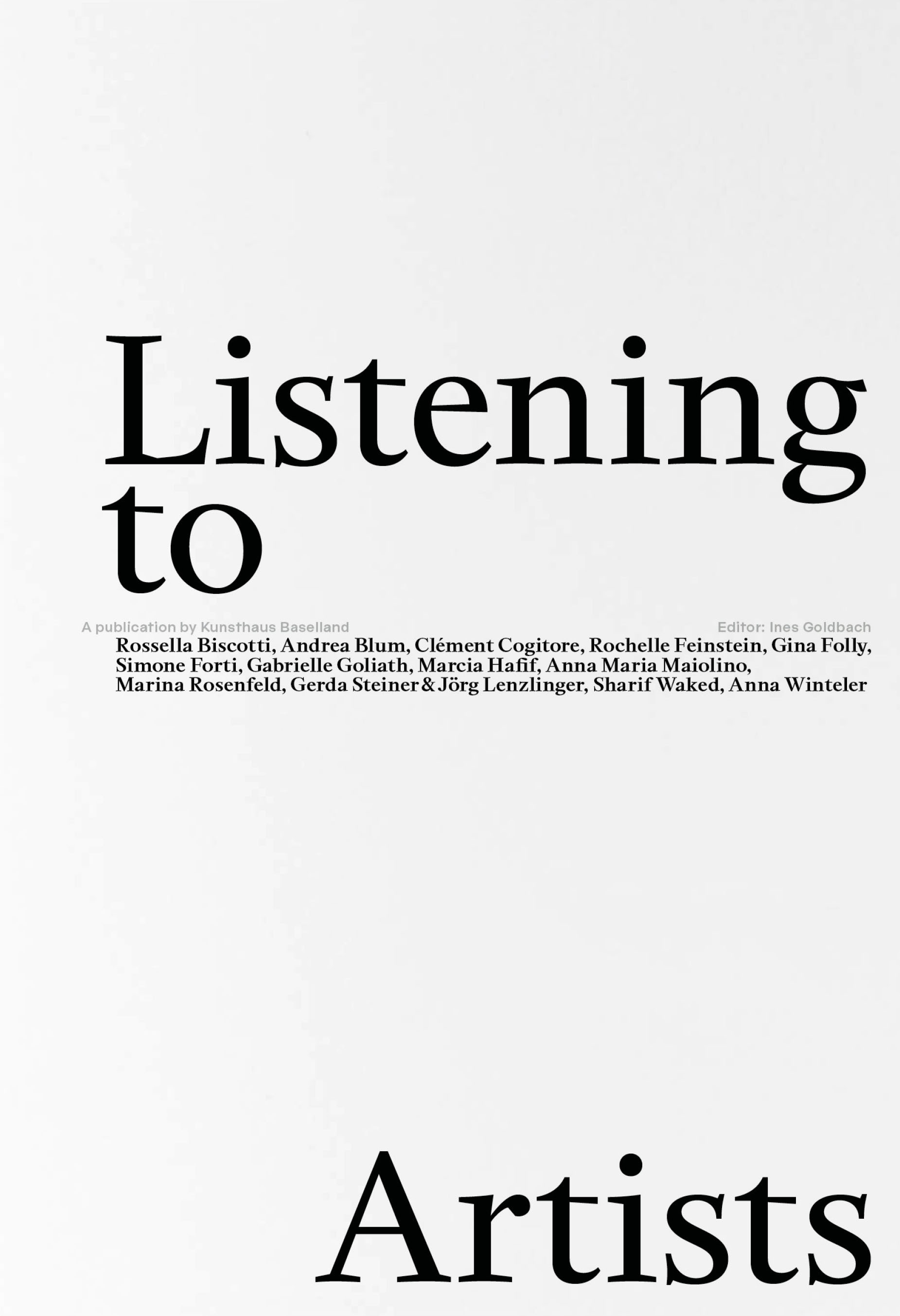Gina Folly
Fashion, Sex and Death – Science – Sports, Gardens and Conspicuous Consumption
Annual exterior project 2019
15.2.2019 —
29.2.2020

Since many years, Gina Folly's work deeply engages with the medium photography, which she extends and complements with new forms and modes of presentation. The political, economic, cultural and social events and phenomena, as well as ecological questions influencing her precise reflection and analysis of her immediate surroundings often play an elemental role in her installation works. Human beings in their self-created environment — between naturalness and artificiality, within a steady creation of respective concepts of life — are further objects of Folly’s interest. For the annual exterior project 2019, Ines Goldbach met the artist for a dialog.
Ines Goldbach: I’d like to talk to you about your unique approach to photography, the central medium of your artistic practice, which concurrently is always conceptualized within space and installation. By tracing everyday things and situations, recognizing and capturing them specifically through the photographic eye, you’re questioning your surroundings comprehensibly and humorously, yet with an ironic and delicate criticism, among other things generating room installations from them. With that and various other reasons in mind, the design of the front banner to me seems very fitting within your work. Everyday life, naturalness and artificiality, reality and exaggeration are meeting here, and you’re simultaneously opening a secondary architectural space with it. Let’s begin with how you arrived at this motif you’re showing here.
Gina Folly: In spring 2018, I had the opportunity for a three month residency at the Swiss Institute New York. Luckily, I could stay with a very close, old friend of mine during that time. The motif of the banner for the Kunsthaus is a picture of his bookcase. But it’s not just the picture of a personal library, it also implies something universal. To me, the image is a placeholder for friendship, love, past, future and imagination, maybe in one word: for life. At the same time, the motif contains several important layers that appear frequently throughout my practice. On the one hand, this particular bookcase contains very personal, private and intimate issues and publications, books that my friends made for example; on the other, there are texts that gave context and meaning to the development of my own works; and lastly, it’s also the collection of books and the categorization of the bookcase of a friend. All this makes the motif both, an encyclopedia of my personal life and a motif that remains valid in a more universal, abstract sense.
IG: To me, the motif tells us a lot about its worldliness — an old notion of the big encyclopedia, a world knowledge, and likewise the desire to compartmentalize the world into separate domains to be able to put it into an order. Do you share this desire in your artistic examination of everyday life?
GF: Everyday life is a very important part of my practice, maybe even the most important.
IG: Everyday life will also constitute an integral element in your work for the Kunsthaus Baselland. The work will be present in a public space for the next 12 months, 24 hours a day, and thus will activate, irritate and inscribe itself into a tremendous outdoor space. It makes me also remember your works for which you showed videos in the smallest spaces available to you — cardboard boxes. At first it may seem like the polar opposite, merely looking at pure size. Yet maybe it’s the exact same: to work with the available space, in its prosaicness, and to activate it through imagery — moving or still. What’s your perspective on that?
GF: It fascinates me to experiment with ratios and proportions and to find out how a neutral observer reacts to it. For example, one of my favorite things about the banner for the facade of the Kunsthaus Baselland is how the books become almost life-sized and thus automatically enter a dialog or relationship with the viewer, and maybe also subsequently become a bit abstracted.
IG: Additionally, I’m intrigued by something in your artistic approach, that is you taking from the most diverse questions or topics — akin to an artistic research — like nature, animals, the attempt to bring naturalness to places of great artificiality, like a zoo exhibit for example. Or, your contribution in the course of the satellite project of the Kunsthaus on the Dreispitz in 2014, for which you created special lamp objects as glass sculptures using daylight lamps for a large room, offering a space of quiet and recovery to the environment for a limited amount of time. I also remember your work Untitled (Haemanthus albiflos, Suite), conceptualized in 2013. For it, you used a certain plant whose name and appearance among other things resemble a hearing organ, an elephant ear. Installed hanging from the ceiling, the plant was flanked by a small loudspeaker. The delicate music-sound-sequences were compiled by your friend composer and programmer Stephen Lumenta to — how you called it — affect the growth of the plant. With these works in mind, I feel it has a lot do with you making an offer to others, to halt from daily life, to be critical and to react. Is it something along these lines?
GF: Not exactly. I’m much more interested in having my own questions and uncertainties answered by the surroundings I find myself in at a given time. Within that I’m interested in political, economic, cultural, social events and phenomena, as well as our respective modes of behavior towards them. I often work with minimal shifting of context of symbols representing the prophecies of the pursuit for more naturalness and productivity in an increasingly technological environment.
IG: I’d like to address a last aspect, processual working, since many of your works develop and result from one another. Is the motif of the banner one of them — a step in sequence of steps?
GF: Yes, definitely. My works almost always generate from a photography. I’m keeping a sort of diary, mostly taken with my phone. I document my daily life as an observer. They’re architectural structures, objects and social events that make our daily life easier, disrupt it, make it more complicated, or ones that I don’t understand. Especially because of that, it can become interesting to document them. These moments mostly vanish again in my archive. I go back to them when I’m working on a specific project. They result in mostly approbate objects that I reproduce and specify. These processes are about entering relationships. Be it getting to know the person who produced the object I’m attracted to, or knows the reason of its existence, or to find the right producer to make exact replicas of the respective works. This engagement is important, since it almost always manifests and legitimizes the subsistence of my work.
Gina Folly. Born in 1983 in Zürich, currently lives and works in Basel and Paris. Between 2001 and 2005, she absolved a photography apprenticeship in Zürich. She finished her Bachelor’s degree in the department for arts & media at the Zürich University of the Artin 2011. In 2014, the Master of Art in Fine Arts at the ZHdK in Zürich followed. She directs the exhibition space Taylor Macklin with Selina Grüter and Michèle Graf since March 2014. Numerous residencies and fellowships. Current stay in Paris as part of a studio fellowship.
The previous artists realising annual exterior projects have been: Bianca Pedrina (2014), Kilian Rüthemann (2015), Matthias Huber (2016), Daniel Göttin (2017) and Vittorio Brodmann (2018).
